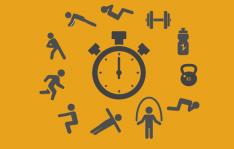Sample Running Workouts
It's not just about running faster more often; it's about the right balance of work to build your fitness accordingly. While many runners fear speed work because of an increased chance of injury, the truth is it isn't the work itself that makes you susceptible to injury, it's that there's been no adaptation.
Don't rush into your new program; instead build deliberately to ensure adequate recovery and excellent form. The fatigue you'll experience with increased intensity is still significant; your ability to rest must also increase commensurately.
Also, remember that you should have a significant warm-up before conducting any speed sessions. An example would be:
- Fifteen minutes of running, building from easy to moderately hard; then?
- Three repeats of 30 seconds at 5K effort with 1:10 of jogging after each.
More: 4 Running Speed Drills
Focus: Boost your VO2 or Super 5K Speed
Three-minute intervals are the perfect duration to challenge your top-end speed without sacrificing form. Each repeat should be followed by two minutes of rest during which you can run at the level you feel most comfortable and most likely to recover for your next interval. Run these at approximately 103 to 105 percent of your current 5K speed. Start with three repeats and build up to five or six.
More: How to Test Your 5K Run Speed
Focus: Increase Threshold Capacity With Mile Repeats
In addition to the top-end speed, you can do significant work at your running threshold level. This effort is enough to see gains without creating the need for massive recovery.
After a good warm up, run a mile at your threshold pace / heart rate, approximately 95 to 97 percent of your current 5K speed.
Recover for 50 percent of the time you ran. Note: A nine-minute-per-mile pace nets you 4:30 of recovery. If needed, you can walk the first part of your recovery interval. Start with one mile and build to three-mile repeats; note you can increase by half-mile increments as needed.
Focus: Maintain Your Hard Earned Endurance With the Easy Long Run
Aside from these two interval sessions, there is one more run to consider. This is a very aerobic, easy run ideally done at a conversational pace. You might even consider doing it with a group or in a social setting to keep you honest.
The goal here isn't to push the pace but rather to do the minimal work required to keep the basic endurance you have built. This can be anywhere from a hour to ninety minutes long; build it as you see fit and keep it easy. Any overachieving here will result in your inability to push the quality interval runs.
Conclusion: Fast Can Be Fun and Effective
Running faster is rewarding; you see the results of the interval sessions almost every week. And thanks to a generous offseason holiday schedule there is no shortage of 5K or 10K races you can schedule to keep pushing your limits.
Remember to recover just as much as you work and to make the most of your offseason. There's still plenty of time to add volume later in your year, and soon you'll be adding it on top of your new-found speed. Guaranteed, you'll be pleased with the results.
More: How Long Should Your Offseason Recovery Be?
 Search for your next triathlon.
Search for your next triathlon.
- 2
- of
- 2
About the Author









Discuss This Article